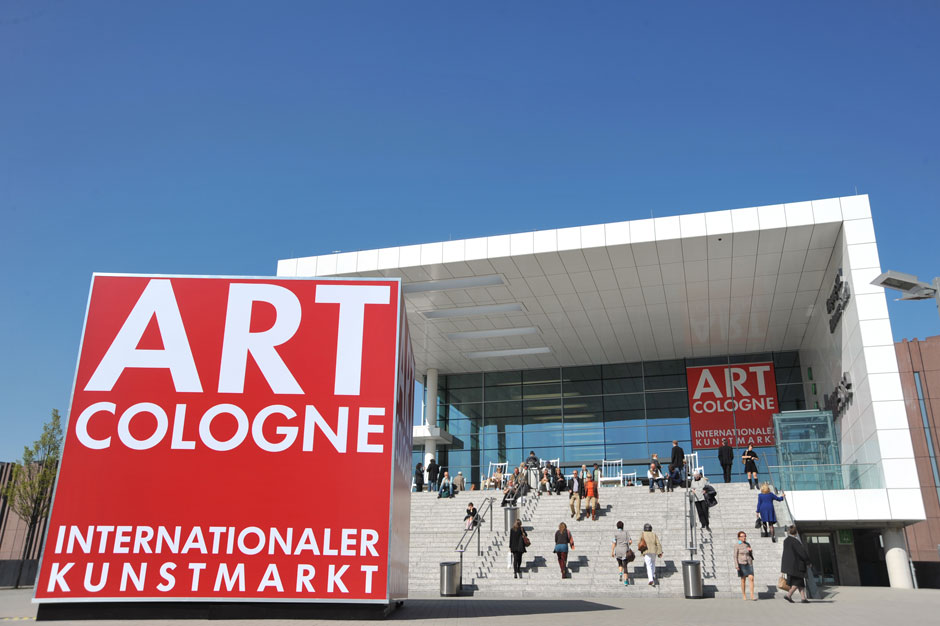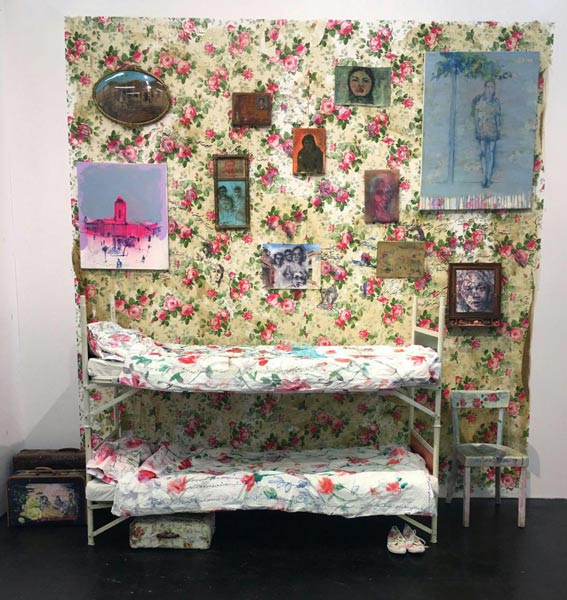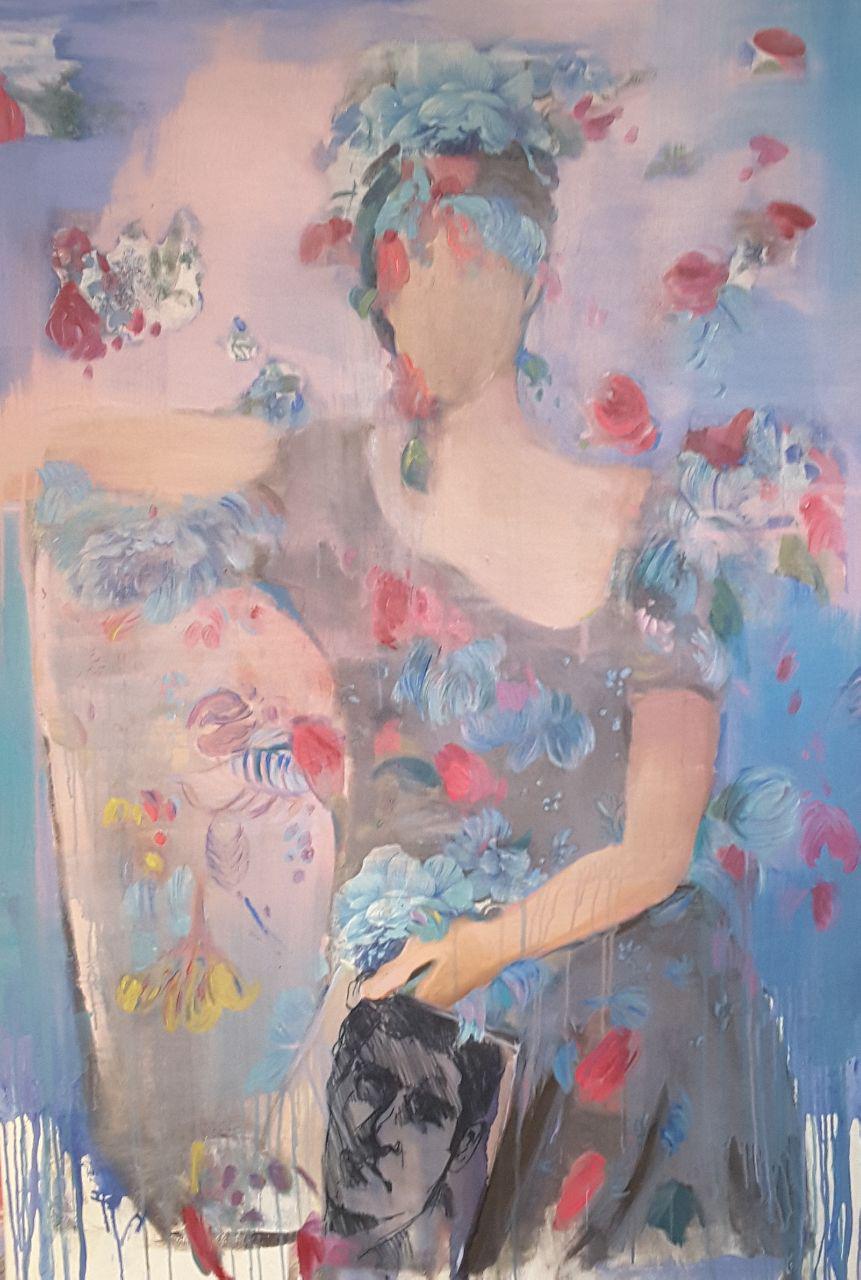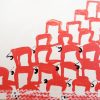Shahram Karimi in ART COLOGNE from BRIGITTE SCHENK GALLERY
۲۰۰ top international galleries and high-calibre newcomers from 31 countries: the 52th edition of ART COLOGNE (19–۲۲ April 2018) will host a line-up of exhibitors unmatched in the German art market. In the “GALLERIES” sector, renown galleries will be presenting an exceptional range of high-quality modern masters and work by post-war and contemporary artists. With NEUMARKT, ART COLOGNE presents a critical insight into the practices and interests of the newest generation of galleries.Halle 11.2 Stand C 025
۱۹ – ۲۲ April 2018
GALERIE BRIGITTE SCHENK
ART COLOGNE 2018
Vernissage
Wednesday, 18 April 2018, Noon – ۸٫۰۰ pm
Opening hours
Thursday 19 April – Saturday 21 April, 11.00 am – ۷٫۰۰ pm
Sunday 22. April, 11.00 am – ۶٫۰۰ pm
Participating Artists frome GALERIE BRIGITTE SCHENK:
Dennis Del Favero
Abdulnasser Gharem
Halim Al Karim
Shahram Karimi
Maria Zerres
SHAHRAM KARIMI
Shahram Karimi, The Garden, My Skin, 2017 Mixed Media, Cots, Wallpaper, Acrylic on canvas, paper, wood, poems (2012-2017) on canvas, size variable
The Iranian artist Shahram Karimi (1957*) fled from Tehran 1987 and lives and works since then in New York and Bonn, Germany. He is a painter, filmmaker and poet. Karimi’s works are characterized by a synthesis of Iranian traditional miniature painting and contemporary genre painting, defined by an intense density. The themes of escape, exile, pain but desire and dedication at the same time are subjects both in his paintings and his poetry.
“In an era when Globalism has become an integral aspect of our experiences, the Iranian born artist, Shahram Karimi, truly represents transcultural currents and realities in the context of contemporary art. His aspirations are at once rooted in his personal cultural history, such as the traditional Persian miniature paintings, and his subsequent life outside and exposure to the history of abstract, minimal and conceptual art of the west. Karimi has arrived at a unique form that combines both aspects of seemingly diverse cultures in an artistic language which transcends boundaries of such localities.“ Shirin Neshat.
At Art Cologne he is showing the installation “Lost Paradise 1”. The rose-covered garden is illusory: a closer look reveals a cage. Its interior hides a fountain, numerous suitcases and miniatures which are covered by his moving poems. Paradise has become a cage, from which it is difficult to escape in Iran.
Shahram Karimi’s exhibition list has included, amongst others, Mana Contemporary, New Jersey, New York (2016), Museum Siegburg (2009), Chelsea Art Museum, New York (2009), Tehran Museum of Contemporary Art, and the Istanbul Biennial (2003). His works are represented in important international collections such as the Farjam Collection, Dubai and the Thomas Walther Collection, Zürich. As a production designer he has been responsible for many films by Shirin Neshat, such as Women Without Men, which received the Golden Lion at the Venice Film Festival (2009).
Dennis Del Favero
Dennis Del Favero, Leibniz, 2017,
۲D videoinstallation, 4K, single channel, 7 min, stereo, BW, Edition of 3
Dennis Del Favero, (1953*) born in Sydney of Italian parents, began his video installations in the mid-1980s. During his time as a guest artist at the ZKM Center for Art and Media in Karlsruhe from 1998-2002, working with Jeffrey Shaw and Peter Weibel, he developed interactive Video Installations and CD / DVD-ROMs, such as “Cross-Currents” and “Pentimento” that examined the dynamic relationship between violence and memory, followed by “disLOCATIONS” and “unIMAGINABLE” that explored new experimental forms of algorithmic narrative.
His work has been widely exhibited in leading museums and biennials such as the Sydney Film Festival (2016), ZKM (2017, 2015, 2009, 2008, 2002), Architecture Biennale Rotterdam (2009), Biennial of Seville (2008), Sprengel Museum Hannover (2005) and in major group exhibitions at amongst others International Symposium of Electronic Media Art (2016, 2013), Shanghai Zendai Museum of Modern Art (2008) and Kunstmuseum Bonn (2005).
“Leibniz” is a 7- minute video, based on algorithmic processing of satellite still numerical data captured at 30,000 kilometres above the Earth over 7 days, accelerated so that one minute equals one day in real time accompanied by a sound track of atmospheric storms.
Dennis Del Favero is Chair Professor of Digital Innovation, Director of the iCinema Centre for Interactive Cinema Research and Extended Perception Interaction Centre at the University of New South Wales, Sydney, Visiting Professorial Fellow at the ZKM in Karlsruhe, Academy of Fine Arts in Vienna and the IUAV University of Venice.
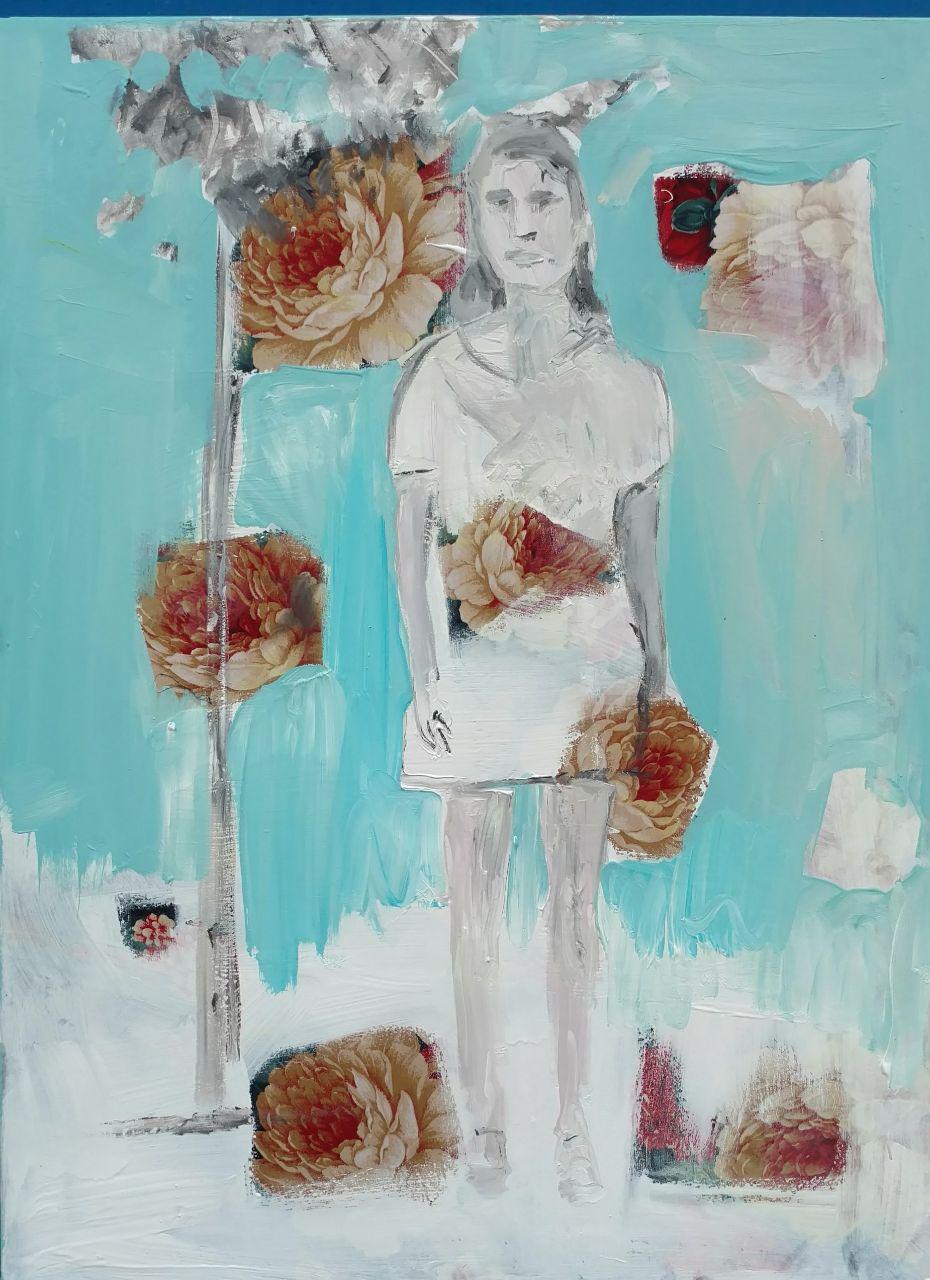
ABDULNASSER GHAREM
Abdulnasser Gharem, Flora & Fauna, 2013
Coriander pigment print with silk-screen glazes on photorag paper 148 x 209 cm, Edition 8 + 1 AP
The Saudi Arabian artist Abdulnasser Gharem (1973*) is known for his highly political and highly sensitive works of art, which achieve the balancing act of creating an open platform in a restrictive society; intelligently and subversively they extend the limits of the possible. In a recently published interview in the New York Times, he says: “That is your role as an artist, to bring out the option that the politician can’t say and that the religious man can’t say,” — “You bring out the solutions that people can’t say.”
In 2014 Abdulnasser Gharem founded “Gharem Studio” in Ryadh – an art co-operative school of ex-soldiers and aimless young people who lack any cultural events such as theatres, concerts or exhibitions in Saudi Arabia and who are inspired by Gharem’s extensive expertise to create works of art. The results of this co-operative were first exhibited at Asia House in London in 2016, curated by Venetia Porter of the British Museum. Gharem’s works show very impressively, and in a very subtle way, that art in a repressive system, more than any political measure, is the more effective medium for infiltration.
At Art Cologne a print from his performance in Abha from 2007 can be seen, for which Gharem wrapped himself in a plastic bubble with a head mangrove (Conocarpus erectus) on a main street in Abha to stay there all day. He demonstrated that he was only using the oxygen produced by the tree to survive, but also drew attention to the destruction of Saudi Arabia’s flora and fauna by importing this plant.
Abdulnasser Gharem’s solo exhibition at the Los Angeles County Museum of Art (LACMA) in 2017, was much-noticed; with “Gharem Studio” he has toured through American institutions such as the Station Museum, Houston, the Minnesota Street Project, San Francisco (2016) and Asia House in London (2016). His works are represented in collections such as the Victoria and Albert Museum, London, the British Museum, London, the Saatchi Gallery, London, the Farjam Collection, Dubai, the Jameel Foundation, London, the Barjeel Art Foundation, Sharjah and the Sharjah Art Foundation Collection, Sharjah.
HALIM AL KARIM
Halim Al Karim, Coma in Paradise 2, 2013, Lambda Print, 170 X 120 cm , Edition 3+2AP
In his work, “photography is used for its non-physical qualities: a medium which quite literally creates an image from light, capturing the transient and interwoven nature of time and memory.“ The “Coma in Paradise” and “Lost Memory” series make this very clear. “Iraqi artist Halim Al Karim underwent a harrowing experience during the first Gulf War. Opposing Saddam’s regime and its compulsory military service he took to hiding in the desert, living for almost three years in a hole in the ground covered by a pile of rocks. He survived only through the assistance of a Bedouin woman who brought him food and water and taught him about gypsy customs and mysticism. Al Karim has since emigrated to America, however, these events have had a profound effect on his life and form the basis for his art practice.“ (Saatchi Gallery)
Halim Al Karim (1963*) has exhibited among others at the ZKM Center for Art and Media, Karlsruhe, Paul Klee Museum, Berne, and The Boulder Museum of Contemporary Art, Boulder, Colorado. His works are located at The Saatchi Gallery, London, Victoria and Albert Museum, London, the Salaam Foundation Abu Dhabi, The Royal Association of Fine Arts, Jordan, the Arab Museum of Contemporary Art, Doha, Qatar, L’Institut du Monde Arabe (IMA), Paris, and Mori Art Museum in Tokyo. Halim Al Karim was nominated for the 2010 Jury Prize of the Sovereign Art Prize and received the Jury Prize of the Cairo Biennial. He has, among other six Iraqi artists, represented the Iraqi Pavilion at the 54th Venice Biennale (2011).


